What's wrong with this picture?
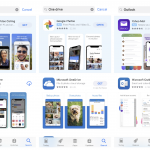
Earlier today, I needed to get Skype onto my iPhone X to receive an overseas call. So I hauled over to the App Store, like any sensible iOS user would do. I was shocked—absolutely floored—to see an advert for Google Duo taking up about half the screen, and appearing above Skype.
You got to ask how many people end up downloading the upper one instead. I don't often go to the App Store and wonder: How long has been this kind of aggressive placement?
Invasion of the dog-poop phones

A few days ago, BetaNews Managing Editor Wayne Williams emailed asking if I could contribute content after being silent for ages, especially as the site's 20th anniversary approaches. He doesn't fathom the potential terror that request will unleash.
I have written a total of two tech stories for BN in 2018—surely to the delight of my many commenter critics. Reason: Joe Wilcox is on a self-imposed writing hiatus as he looks distrustfully at the many so-called innovations that he championed during a 25-year technology reporting career. He is disgusted to see how we have become commodities stored in the pantries kept by Facebook, Google, Microsoft, Twitter, and most every other advert-licking, AI-snorting, location-tracking, tech purveyor of promises looking to consume us for profit. Burp.
Apple HomePod: 'wow' but 'uh-oh'
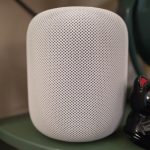
HomePod arrived yesterday at 9:40 a.m. PST; thank-you UPS for prompt delivery of my preorder. My initial reaction: Wow and uh-oh. The wow harkens back to the original iPod, which Apple released in October 2001. The company's design ethic treated the overall experience as the user interface: Attach FireWire cable to Mac and device, music syncs. iTunes manages music on the Mac; for iPod, a simple scroll-wheel navigates tracks displayed on a small screen. The uncomplicated and understated approach defied the UX of every other MP3 sold by all other manufacturers.
HomePod is a defining, roots-return that's well-deserving of the portion of name in common with its forebear; both share in common emphasis on music listening as primary benefit.
7 things you could do instead of CES

The annual scourge is upon us, as tens of thousands of attention seekers descend on Las Vegas for the Consumer Electronics Show. Nowhere else can you watch bloggers and journalists in a constant chase of their public relations foibles, who desperately hunt for all the attention they can get their clients. Think a thousand kids in a small room, calling for mommy and groping her dress. Then multiply ten times.
My last CES pilgrimage was 2008. That's right, I haven't gone in 10 years. No-o-o-o regrets. Nothing important ever comes out of the show, even though each year the hype suggests otherwise. Most new unveiled products won't ship until second half of the year. If ever. There's more vaporware at CES than hot air—and that's no easy feat. Surely the Las Vegas Convention Center installs extra carbon dioxide scrubbers so that participants don't asphyxiate. If there was an alarm for toxic babble, it would sound incessantly.
Something you gotta know about iPhone X
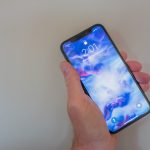
I consider myself lucky, although some commenters (you know who you are) will disagree, by successfully ordering from Verizon Wireless the iPhone X for delivery on launch day—November 3rd. A FedEx driver brought the anticipated package to my door yesterday afternoon. I hauled down to Apple Store to purchase AppleCare+ before my grubby paws caressed the steel rims (vroom) and generous glass (screen measures 5.8 inches diagonally).
Replacing iPhone 7 Plus, which features and benefits greatly satisfy, is a bit extravagant. But I wanted the X to review and for its smaller size but larger display—understanding caveats: Home button's removal changes fundamental interaction and means adapting habits (oh my aching muscle memory).
Google Store flubs Pixel Product Preorders

I would like to thank Google for saving me thousands of dollars in needless spending. Near the end of today's gangbuster hardware event, I was ready to order two new Chromebooks and smartphones, one each for me and my wife. But "error 500" pages on the company's store website and long-lead new product availability dates prompted me to cancel the one order successfully made and to delete the others in process from my shopping cart.
For a company whose product managers droned on this morning about all the reasons why artificial intelligence is so right, Big G got the store selling experience all wrong. I have waited through most of 2017 for a new Google-branded Chrome OS laptop. While hardly a fresh hardware design concept, Pixelbook is nevertheless tempting enough to bring me back to the AI and voice-assistant contextual future from the Apple rotting on the overly-obsessed touch-UI tree. I was willing and ready but instead walked away angry.
Ouch, that hurts! Verizon's new Unlimited plans throttle customers

I should have known better. Once burned is supposed to be twice as wary. Right? Disgruntled by pricing and other policies, in autumn 2015, I took my family from Verizon Wireless to T-Mobile, which cut our monthly bill by more than one-third. But in May of this year we made the trek back in part because data speed is so much faster from my apartment than it is with Magenta. Better Red than dead, eh? Wrong. Oh, dumbass me. Un-carrier's aggressive pricing, and Verizon's first-ever quarterly loss of post-paid subscribers, compelled the nation's largest carrier to respond—by, starting in February, to offer comparable unlimited plan that for my family of five lines would cost just $20 more a month while delivering superior, speedy service. But what Red gave, it now takes away. I regret the decision.
Today's unlimited cellular service plan changes suck some of the most important value from all that extra bandwidth. What good is having something you can't use? Henceforth, Verizon will offer two consumer options—one (Go Unlimited) that throttles streaming video to 480p on smartphones and costlier option Beyond Unlimited that reduces quality to 720p. Go is essentially priced the same as the older unlimited plan, and it takes away even more: Tethering (e.g. Mobile Hotspot) is capped at 600kbps. There's no 4G LTE for you, baby!
The iPhone Legacy
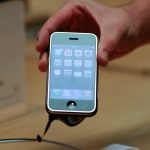
Steve was right, and I don't refer to Apple cofounder Jobs, but to an iPhone buyer I met 10 years ago today. He was among the eclectic group of people waiting outside Apple Store Montgomery Mall to spend $499 or $599 on the fruit logo company's first smartphone. The amount was outrageous at the time for a locked, unsubsidized handset. "I think this is a day that you’re going to see a change in how computers, how handheld computers are done", he told me. "I think we’ll look back in 10 or 15 years, and like on that day the gadget came out...it changed the game". Could anyone realistically disagree a decade later?
But you had to be a believer in June 2007, with iPhone launching on a single carrier (newly rebranded AT&T) in a single geography (USA) from a company with no cellular device experience going against hugely established competitors—with Nokia, the smartphone's inventor, standing atop the heap. By every sensible measure imaginable, Jobs and his team took nothing but risks, making Steve the customer's prediction all the more remarkable.
Europe guts Google, and that's just wrong

Today the European Union gave Apple a great gift to celebrate iPhone's 10th anniversary (on June 29th): The ridiculous, record $2.7 billion fine, and associated sanctions, against Google that once again demonstrates the EU's small-minded oversight that wrongly regulates evolving technologies in a big world. The adverse antitrust ruling finds that the online titan favored its own online shopping services (and paying customers) over rivals.
In February 2010, with the EU Competition Commission's preliminary investigation starting, I rightly called "Google a dangerous monopoly". Seven years later, the competitive landscape has dramatically changed, and rapidly evolves. The Commission's action is too much, too late, and in the short-term can only benefit rivals like Apple that will dominate online activities and commerce as what we knew as traditional web search becomes something else.
There goes the neighborhood, as snobby 'better-thans' wait for their Whole Foods drone deliveries

My first reaction to Amazon buying Whole Foods is "Huh?" Few brands could be any more different. The online retailer is all about giving customers the most for the least amount spent, while the grocer is the pricey purview of the alt-organic lifestyle elite. No moment is better metaphor for Whole Foods' clientele than the exchange I heard between a thirtysomething couple standing at the deli holding chicken luncheon meat. "Is it free range?" the women asked her husband. It had to be, or she wouldn't buy. They argued. I silently chuckled: luncheon meat—not a bird! It's all pressed meat, Honey. You do know that?
But from another perspective, and one transcending retail store presence, are other considerations, like brand affinity and buyer demographics. For the first, Amazon may be all about value, but in an increasingly middle-class and well-to-do demographic kind of way, particularly among city dwellers. Despite sharing similar cut-throat margin, expansive business philosophies with Walmart, Amazon doesn't carry the same stigma among the socially conscious "better-thans". For the second, who do you think plunks down 99 bucks a year for Prime membership or can't wait for two-day free delivery or is too busy to go to the store to buy groceries? Without hard numbers to back the supposition, I'd bet there is lots of existing and potential regular shopper overlap among these customers and those who walk Whole Foods' aisles.
Google, you better up your tablet game before Apple takes you down

To celebrate the launch of Apple's new 10.5-inch iPad Pro, I ordered Pixel C, which arrived three days ago. Worst case, the tablet can be returned for refund during the buyer's remorse period; there ain't any regrets so far—just the opposite. To my pleasant surprise, the tab is much more enjoyable than I remember, because Nougat is so pretty, efficient, and buttery smooth than was Marshmallow on the device. The screen scorches any available iPad, Pro or otherwise, and the performance is shockingly nimble. My Pixel C shipped with Android 7.1.1 and quickly updated to 7.1.2. I will soon install Android O; Google released Developer Preview 3 yesterday.
There's a certain insanity to the purchase, which I am sure flaming commenters will just love. I reviewed Google's Android slate 15 months ago; that makes the thang ancient as measured in computing years. But Big G still sells the tab, and there must be a reason, right? I got another because a college student took possession of my first Pixel C in early 2016. With keyboard cover, the tablet makes a helluva handy carry-along on campus.
May the Moto Z Force Droid be with you [Review]

If you asked why the Moto Z Force Droid Edition appeals to me, I couldn't identify one thing, which arguably is odd considering this is a review. Benefits and features feel finely balanced, which is a hallmark of good product design. Oh, and that satisfaction is for the pure smartphone experience, which is premium by nearly every measure that matters; I didn't test Moto Mods that expand capabilities.
Lenovo/Motorola and Verizon released the smartphone in July 2016, so this exploration is belated—and then some. Apologies, the delay was necessary. In mid-December 2016, Verizon sent a holiday review package unexpectedly. At the time, my father-in-law's health rapidly declined—and he passed away about 30 days later. In the months following, as we settled his estate and finalized other matters, I occasionally recharged the battery and picked up the Droid but had no real time to test it. Still, something about how well the Moto Z Force feels and fits in the hand compelled me to handle it. Often. To caress the ridged bezel. To read blog posts and news stories on the beautiful display.
I am slave to Apple Watch no more
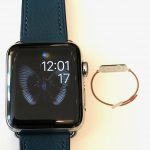
I suffer from phantom smartwatch syndrome -- an ailment that hopefully will disappear over time. Nearly four weeks ago, I put aside Apple Watch 2 stainless steel and replaced it with the simple but appealing ManchesterWatchWorks Iconik 3. Problem: Almost any shifting movement of the timepiece causes me to reflexively flip my wrist and look down; there is false perception of haptic sensation. Apple has trained me well, and I'm tired of being its dog doing tricks. Woof. Woof. Growl.
I feel free! Gone are the nagging alerts -- and I had them barreled down to a minimum of approved services: Some for breaking news; emails from a half-dozen people; and text messages. Among this still seeming torrent, the Activity app annoyed with congratulatory badges and prompts that one of the four main exercise goals (Calories, Exercise Time, Stands, and Steps) -- Apple's athletic lifestyle version of the four food groups -- would soon be achieved. The badges are about as infantile as gold stars that teachers give kindergarteners and with similar purpose: To make the recipient feel good, whether or not deserved. The achievement badge for Earth Day flipped my goat. Seriously? I ordered the Iconik 3 that evening.
Meet Fujifilm X100F [Review]

During the camera film era, Fujifilm battled kingpin Kodak with brighter, more vibrant colors that either photographers loved or hated—perhaps both. That was last century. In the 21st, Kodak is a shadow cast against aged Kodachrome, while its rival has successfully transitioned from print to digital—and with amazing bravado. Fuji's transformation started six years ago with the cleverly-engineered, retro-designed X100, which I reviewed in May 2011.
The compact digital camera's success led Fuji to develop a series of additional bodies and lenses; all are designed with professional shooters in mind. The X series family features compact, mirrorless designs that incorporate digital SLR-size sensors and manual controls—meaning dials and buttons to directly manipulate settings rather than rely on software menus. The X100 line—from the original to the S, T, and now F—remains the most distinctive for how well features and benefits balance set against truly innovative design concepts.
Let me tell you about Apple Fiscal Q1 2017

The measure of Apple fiscal first quarter 2017 isn't record revenues ($78.35 billion) but comparison to major competitors: More than three times Google ($26.06 billion) or Microsoft ($24.1 billion). Amazon announces tomorrow, Groundhog Day. Will the retailer's CEO, Jeff Bezos, see his shadow? The 3x multiplier nearly applies to net income: $17.89 billion, versus $6.64 billion and $5.2 billion, respectively, for the two rivals. Looked at differently, compared to Apple's same quarter in fiscal 2010, seven years later, profits exceed total revenues ($15.68 billion). That's an astounding comparison.
The results defy pundits' prognostications, including my own, about gravity pulling the company back to Earth. iPhone, as major source of revenue, can only stay up for so long, before slowing smartphone sales wreck havoc. That said, credit where it's due: CEO Tim Cook is, as I've asserted before, a logistics and manufacturing genius. He is a strategist, but not an innovation leader like predecessor Steve Jobs. Cook masterfully manages his inheritance, but he, nor Apple observers, should get lost in the quarter's glow: iPhone remains boon and bane.
Joe's Bio
Joe Wilcox is BetaNews executive editor. His motto: Change the rules. Joe is a former CNET News staff writer, JupiterResearch senior analyst, and Ziff Davis Enterprise Microsoft Watch editor.
Ethics StatementBetaNews, your source for breaking tech news, reviews, and in-depth reporting since 1998.
© 1998-2025 BetaNews, Inc. All Rights Reserved. About Us - Privacy Policy - Cookie Policy - Sitemap.
